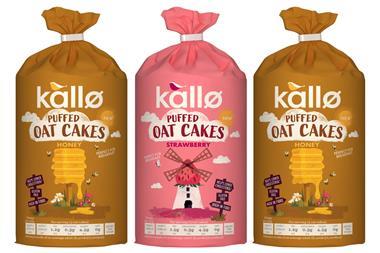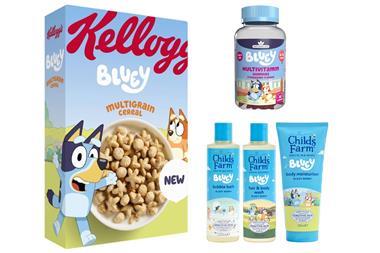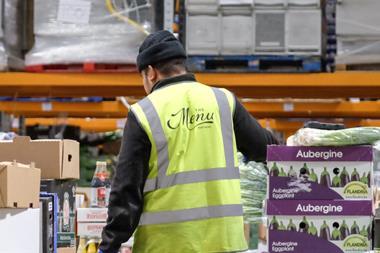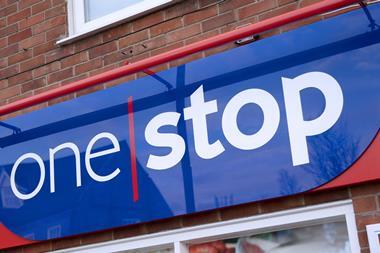Kellogg brings in field marketing troops to ensure satisfactory instore compliance says Steve Hemsley
The fact Kellogg’s Corn Flakes was the only branded product available in every one of the 350 supermarket outlets visited during a recent IGD survey underlines just why brand owners get so hot under the collar when discussing out-of-stocks and merchandising compliance.
In theory, the process of ensuring products are on shelves and accompanying promotional material is in the right place at the right time should be straightforward. Yet in reality there is a serious problem. For many suppliers there is a constant battle to ensure point of purchase (PoP) deals negotiated at head office are implemented by store managers at branch level. If not, a brand’s return on investment from its instore activity can be severely affected.
Field marketing agency Headcount points out that 15% of the £1.1bn annual expenditure on PoP material is wasted because it either is not installed or fails to arrive.
So what’s the secret of Kellogg’s success? Improving compliance through field marketing, says contract sales manager Dez Paterson. “Whether we like it or not, working with a third party agency to ensure compliance is the way we have to do business.”
Over the past 18 months Kellogg has embarked on an aggressive new product development strategy. The work of its field marketing agency CPM has intensified in response to this. The retail call file for the field team is changed every week to focus efforts on those stores where compliance is a particular problem.
“We needed to ensure the unveiling of our new products went smoothly and was seen as a big event in stores,” says Paterson. “We have cut by 75% how long it takes to get new products to market nationally by changing the way we use our field team.”
CPM uses hand-held computer technology to report compliance levels through the day. The data is downloaded on to a web site that Kellogg executives can access. They can then adapt promotional activity while a campaign is still live.
CPM sales and marketing director Martin Ryan stresses compliance is about specific outlets. “If, for example, a client’s call list is weighted too heavily towards Tesco because it is the biggest grocer, we would revise it so a brand’s resources were better targeted at those stores of whatever chain where compliance needs to improve.”
According to third-party auditor TKD, an 80% compliance rate is probably the best most suppliers can expect. This is no comfort for one frustrated brand owner who says his product was delisted by a multiple because of poor sales but that on many occasions it was not on shelf.
The fact Kellogg’s Corn Flakes was the only branded product available in every one of the 350 supermarket outlets visited during a recent IGD survey underlines just why brand owners get so hot under the collar when discussing out-of-stocks and merchandising compliance.
In theory, the process of ensuring products are on shelves and accompanying promotional material is in the right place at the right time should be straightforward. Yet in reality there is a serious problem. For many suppliers there is a constant battle to ensure point of purchase (PoP) deals negotiated at head office are implemented by store managers at branch level. If not, a brand’s return on investment from its instore activity can be severely affected.
Field marketing agency Headcount points out that 15% of the £1.1bn annual expenditure on PoP material is wasted because it either is not installed or fails to arrive.
So what’s the secret of Kellogg’s success? Improving compliance through field marketing, says contract sales manager Dez Paterson. “Whether we like it or not, working with a third party agency to ensure compliance is the way we have to do business.”
Over the past 18 months Kellogg has embarked on an aggressive new product development strategy. The work of its field marketing agency CPM has intensified in response to this. The retail call file for the field team is changed every week to focus efforts on those stores where compliance is a particular problem.
“We needed to ensure the unveiling of our new products went smoothly and was seen as a big event in stores,” says Paterson. “We have cut by 75% how long it takes to get new products to market nationally by changing the way we use our field team.”
CPM uses hand-held computer technology to report compliance levels through the day. The data is downloaded on to a web site that Kellogg executives can access. They can then adapt promotional activity while a campaign is still live.
CPM sales and marketing director Martin Ryan stresses compliance is about specific outlets. “If, for example, a client’s call list is weighted too heavily towards Tesco because it is the biggest grocer, we would revise it so a brand’s resources were better targeted at those stores of whatever chain where compliance needs to improve.”
According to third-party auditor TKD, an 80% compliance rate is probably the best most suppliers can expect. This is no comfort for one frustrated brand owner who says his product was delisted by a multiple because of poor sales but that on many occasions it was not on shelf.
















No comments yet